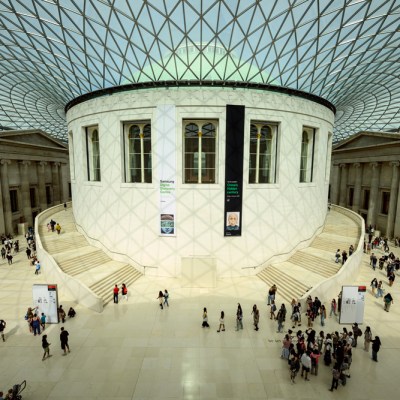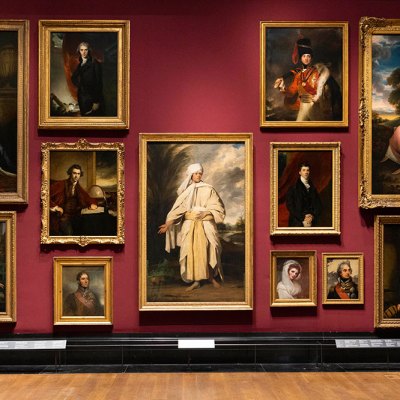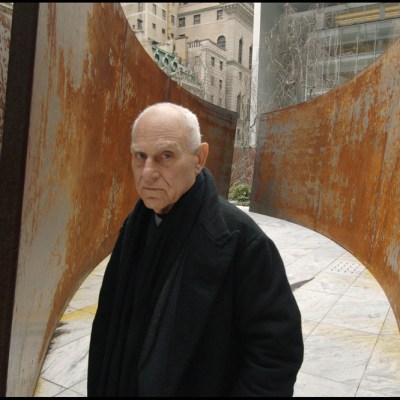It was announced today that Nicholas Cullinan will be the next director of the British Museum. He will be joining from the National Portrait Gallery (NPG), which he has led since 2015. He will take over from Mark Jones who has been serving as interim director since the resignation in August 2023 of Hartwig Fischer after the alleged theft of more than 1,800 objects from the museum’s collection by a curator. Cullinan was previously a curator of modern and contemporary art at the Metropolitan Museum of Art from 2013–15 and curator of international modern art at Tate Modern from 2007–13. During his time at the NPG, Cullinan has overseen a £41m refurbishment of the museum – completed last year – in which public space increased by 20 per cent, and pulled off the joint acquisition of Reynolds’ Portrait of Mai (c. 1776) with the Getty. He will face very different challenges in his new role. As well as the long-running series of thefts, the British Museum needs to raise in the region of £1bn for a decade-long refurbishment of the building, which will include reimagining a third of the galleries. Furthermore, longstanding disputes regarding the ownership of the Parthenon Marbles and of looted Benin bronzes, as well as that of other contested objects, remain unresolved. In the statement announcing the appointment, George Osborne, chair of the museum’s board of trustees said, ‘I could not be more thrilled for Nick and more excited for us as we enter this new chapter in the long story of the British Museum with confidence, and back on the front foot.’ Cullinan said, ‘I look forward to joining its wonderful and dedicated staff and to work with its hugely impressive Board in leading it into a new chapter.’ He will take up his post in the summer.
The British Museum is suing the curator who allegedly stole more than 1,800 objects from its collection. Peter Higgs, who worked in the Greece and Rome department from 1993 until he was sacked last summer, is accused of stealing or damaging the artefacts between 2009 and 2018 and selling hundreds of them on eBay. He denies the allegations and is currently being investigated by the Metropolitan Police, but has not been charged, reports the Independent. The museum’s lawyers argued before the High Court on Tuesday that Higgs tried to ‘cover his tracks’, including the use of fake names on documents and manipulating the museum’s records. They also accused Higgs of suggesting to one of his colleagues that they delete their correspondence. The BBC reports that the High Court judge has ordered Higgs to list or return the stolen items within four weeks, and also ordered the disclosure of his eBay and PayPal records. Only 356 stolen items – less than one in five of the items that were stolen – have been returned to the museum so far. Higgs did not attend the hearing because of ill health.
The sculptor Richard Serra has died at the age of 85. He is best known for his large-scale works made from steel. After graduating with a degree in English and an MFA in Art History in the 1960s, Serra took a trip to Europe, where he resolved to embark on a career as an artist. In his early work he experimented with paint, brickwork, rubber and taxidermy, often with an emphasis on industrial aesthetics – a preoccupation informed by a childhood visit to a shipyard and a stint in his twenties working in steel mills. His sculptures appear in galleries and public spaces throughout the world, often in prominent sites. The Matter of Time (1994–2005), an arrangement of gargantuan circular sheets of rusting metal that weighs over 1,000 tonnes, is in the main hall of the Guggenheim Museum Bilbao. His angular Fulcrum (1987), made of the same material, sits near one of the entrances to Liverpool Street Station in London. In his obituary of Serra for Apollo, Edwin Heathcote writes that Serra ‘revelled in the contrasts between blue collar and high culture’, and says of Serra’s sculptures: ‘He appreciated the steel for its own qualities […] he used its gravity and mass to make it stand up unsupported. There were no unseen tricks or hidden rods. These were things that were just there.’
One of Ukraine’s leading art and design academies was hit by a Russian missile strike on Monday morning, reports the Art Newspaper. Much of the building that housed the Mykhailo Boichuk Kyiv State Academy of Decorative Applied Arts and Design was reduced to rubble by falling fragments of a missile. Several artworks, including paintings, sculptures and mosaics, were destroyed, including all the works that were part of an exhibition called ‘Woman in the Flames of War’. Classes were in session at the time of the missile strike, but no deaths have been reported.
The Art Gallery of Ontario (AGO) has been forced to close after more than 400 of its employees went on strike on Tuesday. Negotiations which, reports the Globe and Mail, began around 10 months ago, broke down after a majority of union members rejected a final offer that would have boosted wages by 3.3 per cent this year and a further 3.5 per cent next year. The union’s most recent contract with the Toronto museum expired in late 2019 and has been rolled over each year since. The union alleges that the AGO has been pushing for more part-time and outsourced work and pointed out that the museum’s chief executive Stephan Jost was paid more than 404,000 Canadian dollars (around £235,500) in 2022. The Art Newspaper reports that the AGO is planning to spend C$100m to build a contemporary art wing. The AGO reported a deficit of C$3.9m (around £2.3m) in the fiscal year up to March 2023.
On Sunday 24, hundreds of protesters from the group Energy Embargo for Palestine forced the British Museum to close. The group was protesting against BP’s sponsorship of the museum – the fossil-fuel giant has been granted offshore gas exploration licences by Israel – and against Israel’s ongoing bombardment of the Gaza Strip. In New York, protests against the war in Gaza also took place at the Metropolitan Museum of Art on Sunday. Three hundred and fifty activists unfurled a quilt on the museum steps, reports Art News. The tapestry of works, made by 64 artists around the world included the traditional Palestinian embroidery known as tatriz. The protest comes weeks after 158 employees, fellows and volunteers at the Met signed an open letter calling on the museum’s director Max Hollein to ‘take a stand in defence of Palestinians and the cultural heritage of Palestine’. The Met remained open throughout the protest on Sunday. Also last weekend, 150 demonstrators entered the Science Museum to protest against Adani Green Energy’s sponsorship of a new gallery dedicated to decarbonisation technology. Adani Green Energy is part of the Adani Group, a conglomerate with substantial interests in coal mining and arms manufacturing.



